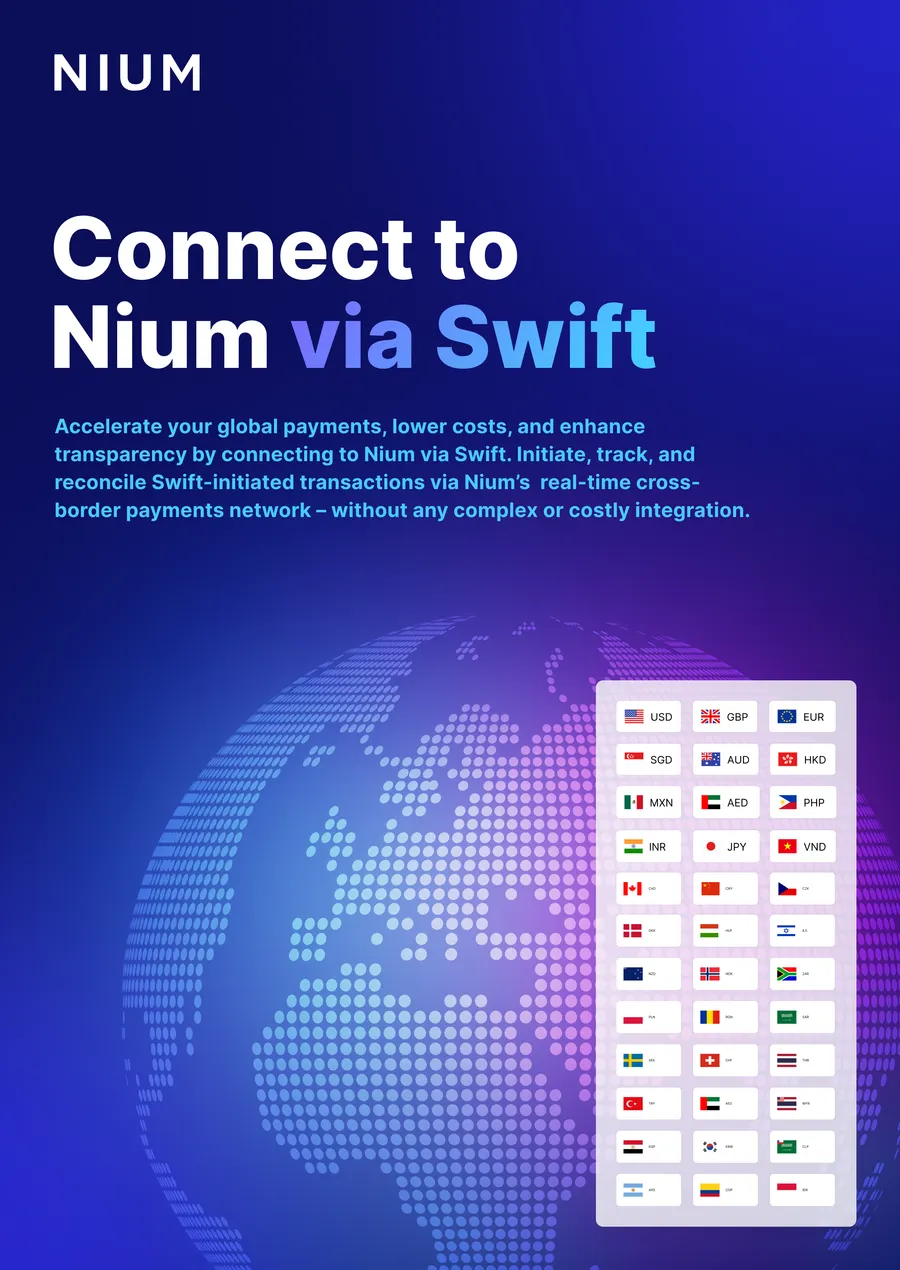By 2028, real-time payments (RTPs) will account for 27.1% of all electronic transactions globally. In that same time frame, over 167 million previously unbanked people are projected to gain financial inclusion through RTPs, and ACI Worldwide forecasts the technology will save consumers and businesses $245.8 billion.
Payments infrastructures, such as Nium, champion this technology for B2B businesses that need to help their customers send money quickly, securely, and cost-effectively.
But as more companies in payments wake up to the potential of RTPs, value added services – the additional functionalities offered beyond just facilitating the transaction – become increasingly important. Online travel agencies, for example, need multi-currency virtual cards and businesses with international payroll look for compliant global salary disbursements built into the payment process.
Why RTPs are vulnerable to real-time fraud
Faster payments also open up a number of new avenues for fraud. RTPs are particularly vulnerable as the payment network settles them immediately and they are irrevocable. As a result, all that innovation can be in vain without top-level fraud protection, the most important value-add service.
Traditional verification methods to prevent fraud, such as penny drop, are slow, unpredictable, and require manual workflows. A penny drop delays verification by days and can cost up to $50 per failed transaction, making it incompatible with instant global payments. The industry needs to adopt new solutions to combat the rise of real-time fraud.
Real-time fraud is already a widespread problem
In 2024, American consumers lost more than $12.5 billion to fraud, a 25% increase from 2023, according to the Federal Trade Commission. That translates to nearly one in five Americans telling their bank they’d been the victim of a scam when using RTPs, according to FICO.
Businesses are directly impacted too. RTP fraud often involves targeting businesses with a high volume of relatively small payments to multiple suppliers in multiple regions, such as online travel agencies or marketplaces. Supplier, partner, and seller fraud somewhat or significantly increased last year for over 50% of those surveyed by Ravelin, with the increase impacting the travel sector in particular.
The most common type of this fraud is Authorised Push Payment (APP) fraud, when a fraudster tricks employees into authorizing a payment into their accounts. Once scammers receive the money from an initial fraudulent transaction they can disperse it through multiple RTP hubs within moments. This makes it much more difficult to track and recover the money.
Modern anti-fraud techniques to combat RTP fraud
With many of the traditional fraud prevention techniques obsolete, PSPs have had to develop new solutions to keep up, with some using machine learning to detect more nuanced patterns and suspicious activity in real time.
One approach is risk-based authentication(RBA), which adjusts the level of authentication required for a given transaction based on its risk profile, such as the device used, the time of day, and its location. But this can still lead to flagging false positives and too much additional input required for some legitimate transactions.
As RTPs increase in number and dollar value, payment service providers must provide a healthy level of friction at the right stage in the payments process to avoid fraud without stifling genuine payment runs.
Protect your RTPs with Nium Verify
Nium’s Verify solution strikes this balance by pre-validating beneficiary accounts, without the need for the other party to intervene (no penny drop is required). Connected via an API, it retrieves the account holder’s name as registered with their bank to ensure payment details match up with the correct recipient. This reduces the chance of a failed payment and helps to prevent real-time fraud.
As more regions adopt RTPs, fraud protection has become the single most important value-add service. Consumers and businesses need a provider that can verify account ownership in real time across multiple markets, saving businesses and payment platforms millions in the costs associated with reconciling misdirected and fraudulent payments.
Learn more about Nium’s Verify solution, or reach out to be connected with one of our payments experts to find out how Nium can help you fight RTP fraud.




.png@webp)
.png@webp)
.png@webp)
.png@webp)






